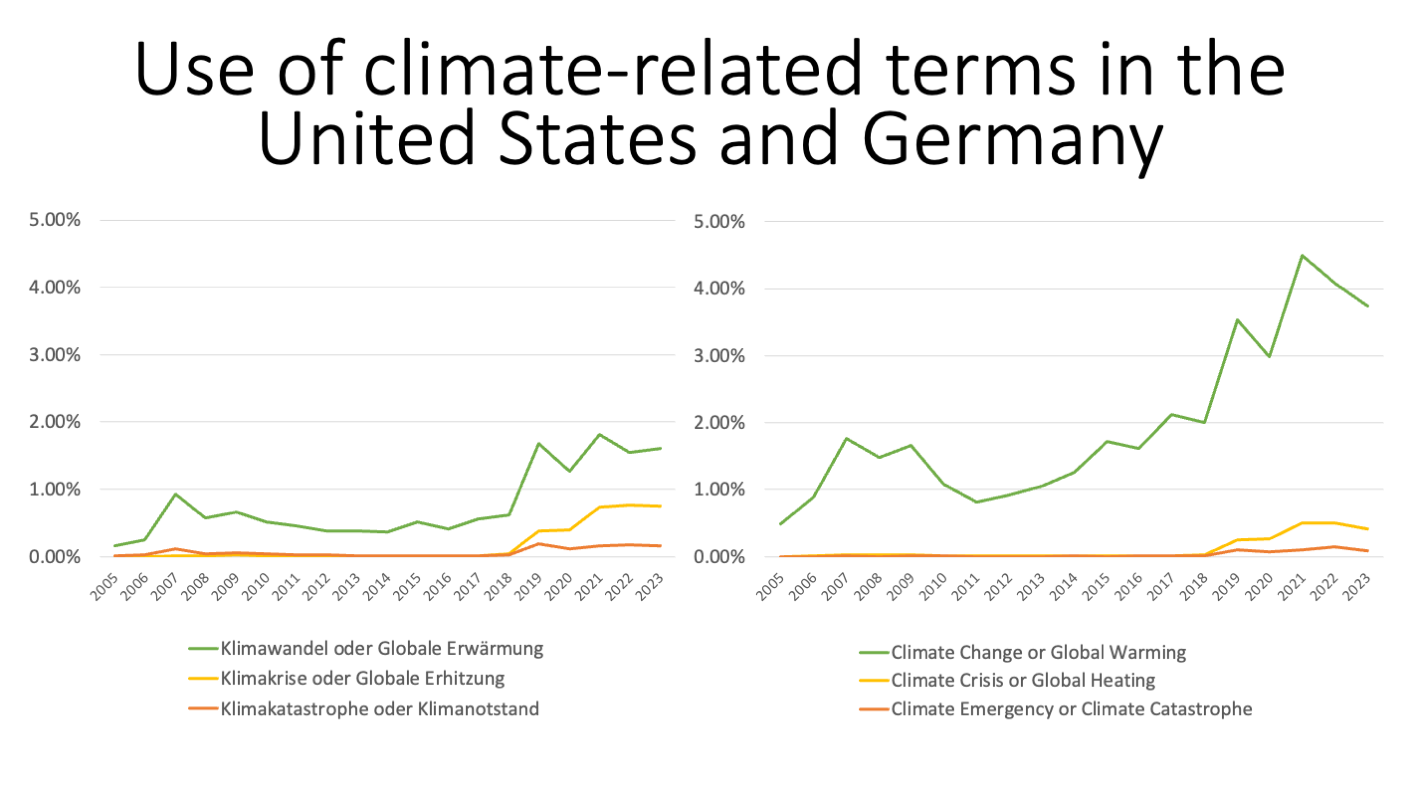
by Michael Brüggemann, Hendrik Meyer, Sam Burton-Weiss, and Robin Tschötschel
In two simple graphs, we address a number of myths about how news media cover climate change in Germany and the United States. Some people incorrectly assume that climate change (1) has been at the center of journalistic attention for a long time and that (2) this attention has been steadily increasing (3) uniformly across countries. Also, critics sometimes wrongly claim (4) that news coverage is overly alarmist.
To provide some data on these misconceptions, we have calculated the share of articles matching certain keyword search criteria among all articles published by a range of media outlets drawn from the database Factiva[1]. The first set of keywords covers climate change broadly speaking, the second the more urgent terms like “climate crisis, and the third even more pressing language like “climate emergency.”
1) Over the years, media attention to climate change has consistently comprised well below three percent of all articles in the United States and well below two percent in Germany. There has been a significant increase since 2018, but the overall level remains arguably low.
2) Media attention has not been steadily increasing. Instead, after years of high attention (2007-2009), years of lower attention (2010-2017) followed. In the aftermath of global climate protests, extreme weather events (heat, droughts, wildfires, floods), and continued warnings from climate scientists’ (IPCC) reports, climate coverage has seemingly reached a higher level—but it is likely still rising and falling with the ebb and flow of news on other topics.
3) Levels of attention differ between countries: we hypothesize that the more polarized debate in the United States creates more attention and coverage than in Germany. Yet, this deserves closer scrutiny.
4) The more neutral terms (“climate change” or “global warming”) still dominate coverage. However, while terms that point to climate change as an emergency or catastrophe are not widely used at present, we do observe an increasing use of descriptions of climate change as a crisis. Is this alarmism? We would rather argue that journalism is acknowledging the reality of climate change impacts around the world.
[1] The outlets making up this sample are: Bild Zeitung, Hamburger Abendblatt, Leipziger Volkszeitung, Spiegel, Stuttgarter Zeitung (print), Süddeutsche Zeitung, TAZ, Die Welt, and Die Zeit in Germany (all print and online unless otherwise mentioned); Austin American Statesman (print), Boston Globe (print), New York Times (print and online), Newsweek (print), Salt Lake Tribune (print), Star Tribune (print), New Yorker Magazine (print), USA Today (print and online), Wall Street Journal (print and online), Washington Post, (print and online) in the United States.